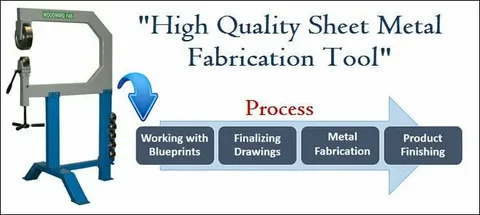Sheet metal fabrication serves as the backbone of modern manufacturing, creating everything from electronic enclosures to aircraft wings. This foundational manufacturing process transforms flat metal sheets into complex three-dimensional components that form the structural core of countless products. Understanding essential sheet metal processes empowers designers to create more efficient, cost-effective solutions.
Cutting: The First Step in Sheet Metal Processing
Sheet metal fabrication begins with precise cutting operations that shape raw materials to required dimensions. Laser cutting provides high-precision capabilities for complex sheet metal shapes, delivering clean edges and intricate geometries. Punching creates standard holes and cut-outs quickly in sheet metal, while shearing produces straight-line cuts for sizing raw materials. Each cutting method serves specific sheet metal applications based on precision requirements and production volumes.
Bending: Adding Form and Function to Sheet Metal
Bending operations transform flat sheet metal into three-dimensional shapes using specialized equipment called brakes. Critical sheet metal design parameters include bend radius and K-factor calculations that determine material behavior during forming. Consistent bend radii represent a fundamental sheet metal best practice, simplifying tooling requirements while ensuring predictable results across production runs.
Punching and Forming: Creating Features in Sheet Metal
Advanced sheet metal operations extend beyond simple hole creation to include specialized features like louvers, ribs, and embossed elements. These forming operations add structural strength and functionality to sheet metal components without requiring additional parts or assembly operations. Strategic feature placement enhances sheet metal part performance while maintaining manufacturing efficiency and cost-effectiveness.
Joining: Assembling Sheet Metal Components
Sheet metal assemblies typically require joining operations to create complete products from individual components. Common methods include welding for permanent joints, riveting for removable connections, and mechanical fasteners for field-serviceable assemblies. Designing sheet metal parts for easy assembly reduces production costs while improving quality and consistency in manufacturing environments.
Finishing: Enhancing Sheet Metal Performance and Appearance
Surface treatments significantly impact sheet metal component performance and visual appeal. Powder coating provides durability and color options for sheet metal parts, while anodizing offers corrosion protection specifically for aluminum substrates. Brushing creates attractive cosmetic finishes that enhance the professional appearance of visible sheet metal components in consumer applications.
Five Best Practices for Sheet Metal Design Success
Successful sheet metal design requires attention to manufacturing-specific considerations.
- Specify uniform bend radii throughout designs to minimize tooling complexity
- Account for material thickness in all sheet metal dimensional calculations to ensure proper fit and function
- Position features away from bend zones to prevent distortion during forming operations
- Understand minimum flange length capabilities of your fabrication partner
- Consider assembly requirements and incorporate necessary access holes in sheet metal designs from the initial concept phase
These five practices help ensure successful sheet metal fabrication by addressing the most common design challenges that can lead to manufacturing difficulties, increased costs, or part quality issues.
Sheet Metal as a Versatile Manufacturing Solution
Sheet metal fabrication represents a versatile and reliable manufacturing process capable of producing everything from simple brackets to complex assemblies. Well-designed parts following fundamental principles result in stronger, more cost-effective components that can be produced faster and more consistently than alternatives requiring extensive secondary operations.

